
“How we remember, what we remember and why we remember form the most personal map of our individuality.” ~Christina Baldwin
I tend to be a forgetful person. To try to remedy this, my dad and I put in a four foot by eight foot whiteboard just inside the front door to my house. Yet somehow I managed to ignore a three foot tall note reminding me to email my professor for the better part of a week. I guess I still have some work to do on heeding my reminders, or maybe I just need to write bigger.
In any case, I had a bracelet made to help remind me of some of the things I find most important. It is symbolically dense so I won’t get into everything I designed the bracelet to say. Instead, I am going to just try to hit the high points.
On the left side are a crescent moon, nine stars, and a small ceramic teapot. I have always loved science, science fiction, and outer space, but for my purposes here the moon and the stars are just context for that little teapot.
Bertrand Russell was a Twentieth Century philosopher in the fields of philosophy of language and metaphysics. When he would debate people, some of them would argue “You cannot disprove such and such a supposition so you must admit that it is possible that I’m right.”
Russell would agree that of course it was possible that they were right, but that does not mean their idea is worthy of respect.
His counterargument was by way of a thought experiment. “Imagine,” he would say, “that I posit that orbiting the sun between Earth and Mars is a small ceramic teapot. Imagine further that I posit that the teapot is small enough and far enough away and has a low enough albedo and therefore our instruments cannot detect it. You would then have to agree that you cannot disprove my teapot.”
Even though we cannot disprove Russell’s teapot it’s not bloody likely that to be out there. “Not bloody likely” are my words, not Professor Russell’s.
The existence of that teapot is not equiprobable, it is not equally likely to be true as to be false. I have that teapot on my bracelet to remind me to be rational, logical, and skeptical and to make sure that the people I’m listening to and the people that I respect are the same.
On the other side of the bracelet is the Ouroboros—the snake eating its own tail—and a picture of a hydrogen atom. I’d like to focus on one facet of that atom. To me it’s a reminder of the beautiful and humble origins of everything that exists.
Carl Sagan said that “Life is what hydrogen atoms do when given 13.7 billion years.”
For a long time, the only element that existed in the universe was hydrogen. Eventually, enough hydrogen came close enough together that it formed stars, giant burning balls of gas. At the center of these stars was ongoing nuclear fusion.
They were smashing those hydrogen atoms together and making helium, and eventually smashing those together to make lithium and boron and beryllium and carbon and nitrogen and oxygen and all these other heavier elements I can never remember.
Eventually, some of stars get so dense they cannot hold together anymore and they explode. These heavy elements can then proliferate throughout the universe until eventually some of them coalesced into things like planets, like the planet Earth.
I find it beautiful, awesome, and inspiring that each atom in our bodies was forged in the furnace at the heart of a star, and I like that reminder.
Finally, at the center it reads “This too shall pass.” The story of this phrase goes back thousands of years. It goes something like this:
A wise Persian king asked his advisers to bring him something that would make him happy when he was sad and vice versa. They eventually brought the king a ring on which is inscribed “This too shall pass.”
I like both sides of this reminder.
I like being made happy when I’m sad. Before I had to give a speech, I was sitting there, knees knocking, and I saw my bracelet and was reminded that in four to six minutes I would be done no matter what.
The reminder I really like from this phrase, however, is the other side of it: being made sad when I’m happy. This isn’t because I’m melancholic. I’m not Eeyore-esque. I don’t like to sit in the dark wearing black nail polish, dark eyeliner, and crying all the time.
When, for example, I’m getting along swimmingly with my sister—and everyone who has siblings will know that this is not a perpetual occurrence—I like to remember that I won’t always be that way. That we will fight again and that one day one of us is going to die.
I don’t mean to sound morose but for me that realization reminds me that the time we are spending together now, when we’re both happy, is special and meaningful. It is something to be appreciated and treasured.
I think that we all have objects like my bracelet—maybe not something so intentional, or custom-made, but something of one sort or another.
For example, my parents have hanging in their bedroom a plaque that reads “Always kiss me good night.” They are very much in love and I don’t think they need that reminder, but seeing it brings them joy. Yours could be a wedding ring, a necklace, a book, or a chotskie from a trip.
These are the objects that give us cues about what’s important to us. What are some of your objects and of what do they remind you?
Photo by Monica’s Dad
About J.C. Lundberg
J.C. Lundberg holds a B.S. in Mathematics and M.A. in Religious Ethics from the Catholic University of America. While not writing his group's next D&D adventure, he spends his time workings towards a J.D. from the University of Washington.



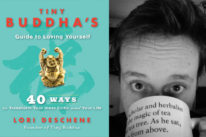
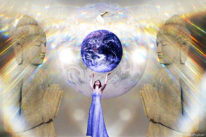


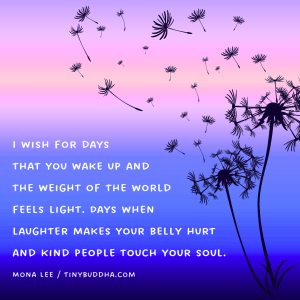
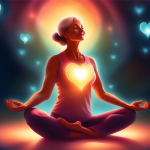
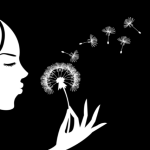



 Though I run this site, it is not mine. It's ours. It's not about me. It's about us. Your stories and your wisdom are just as meaningful as mine.
Though I run this site, it is not mine. It's ours. It's not about me. It's about us. Your stories and your wisdom are just as meaningful as mine.